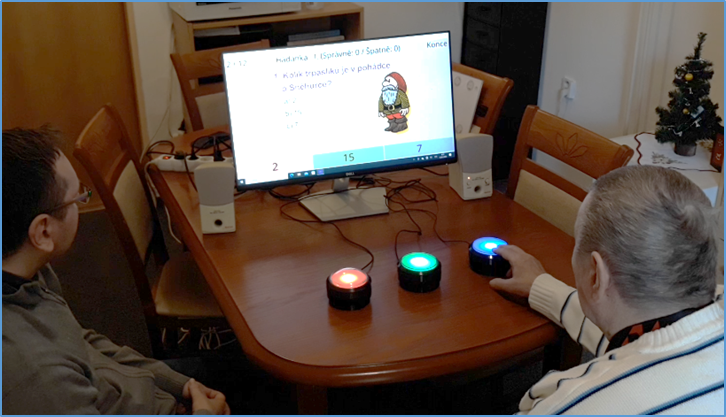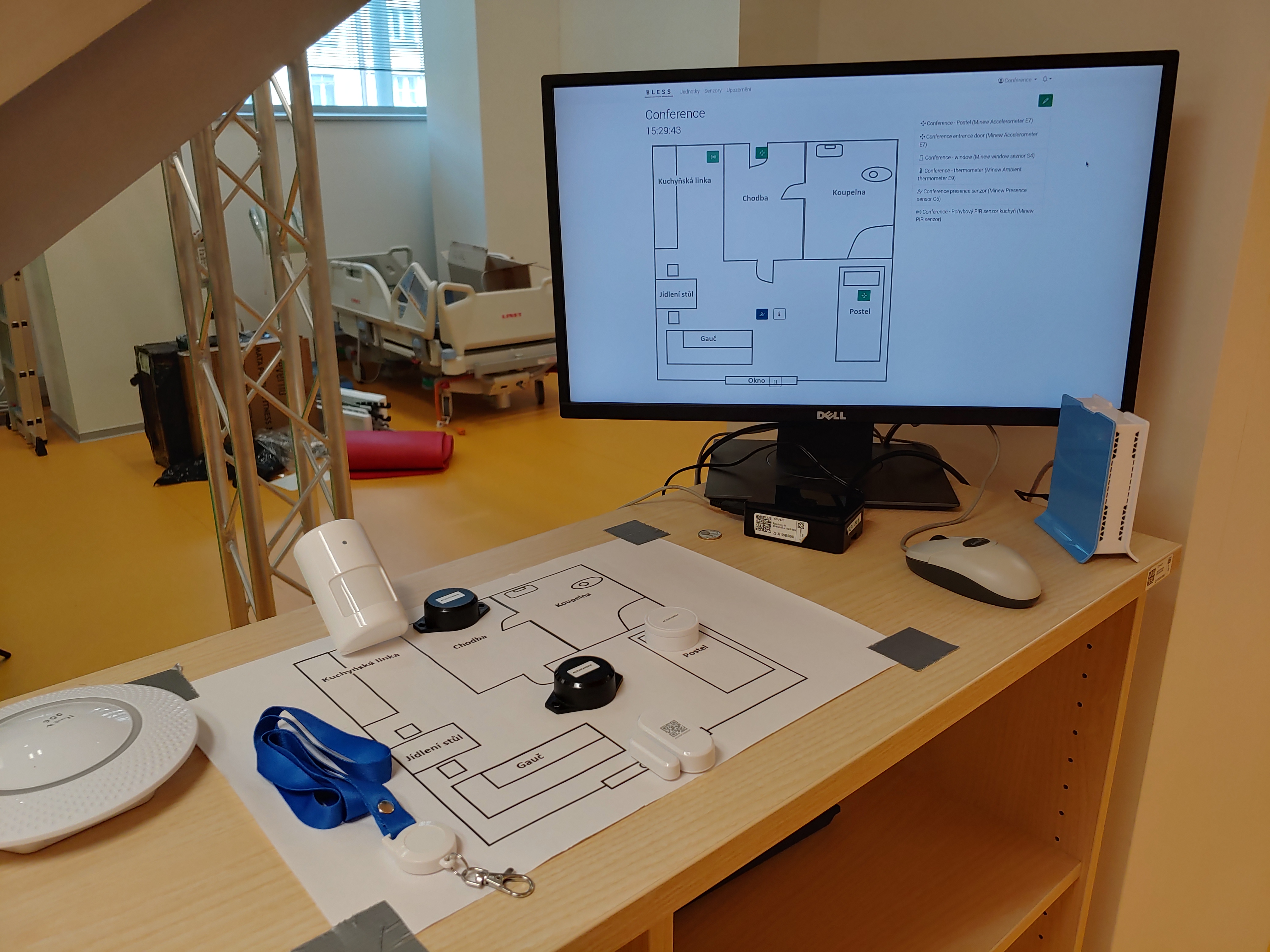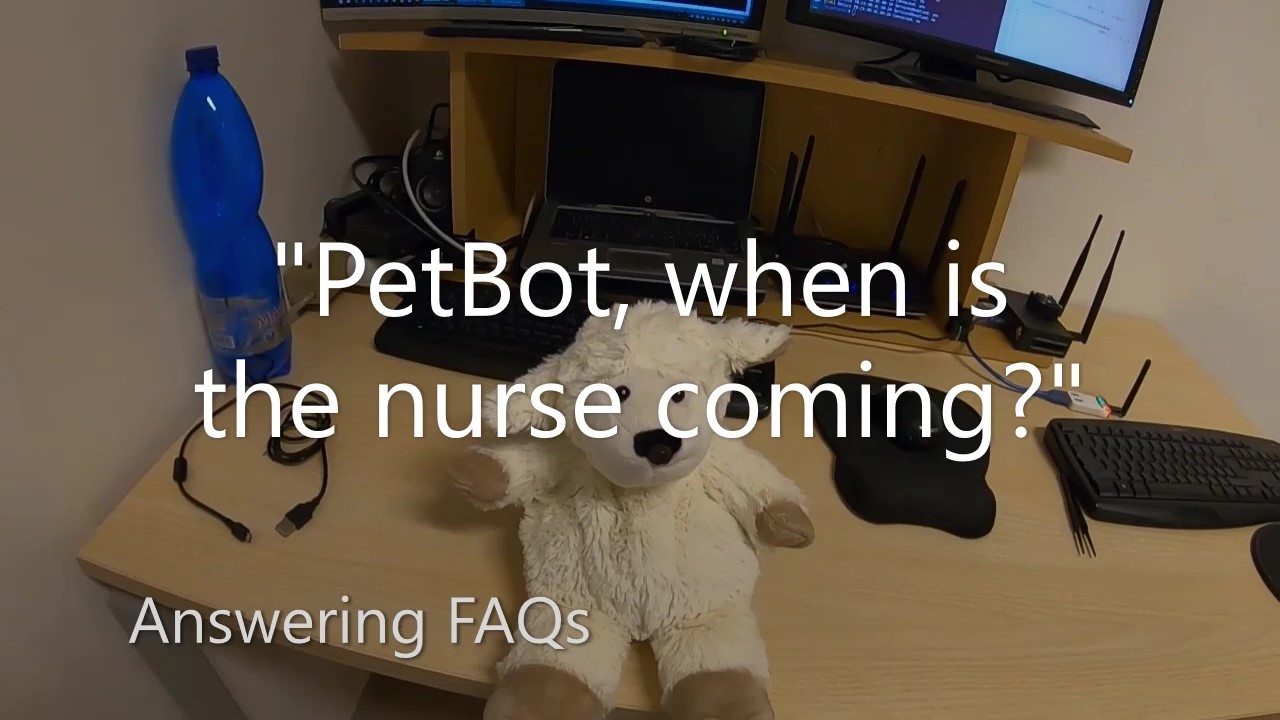DigiCare4CE Pilot Action in Czechia (CIIRC project partner)
Smart Technologies in Care Digitalization

Overview
The pilot initiative addresses the challenges of Czechia´s long-term care system, which is under pressure due to an aging population and a shortage of health professionals. Strategies for digital transformation highlight the potential of digital applications to bridge this gap. Since the development of electronic documentation tools is ongoing, we decided after long discussions with the pilot partner to design and implement a system that can provide data on clients to a healthcare information system.
Our system is designed as modular being composed of three subsystems:
- a sensor system,
- cognitive games, and
- a social petbot.
All three subsystems were developed by CIIRC CTU and piloted at the Gerontology Centre (GC) in Prague. The purpose of this implementation was to technically test the chosen approaches in a real-world environment, and more importantly, to understand the perceptions of end-users (the staff) and the true impact of these technologies on their work environment and workflow. The project also aimed to increase user acceptance of the technology and provide support in specific work processes, with a main challenge being to overcome the initial distrust often associated with introducing new innovations into long-established workflows. The goal is to show the possibilities of using these technologies in various settings, including home care.
Decision-Making Process and Co-Creation
Based on an initial analysis and discussions of the CIIRC CTU researchers with the Gerontology Centre staff, the management and employees formulated their expectations. In response, a proposal for approaches, devices, and control options was prepared to support the independent living and comfort of clients while improving the work efficiency of the end-users. The aim of all pilots is to test and analyze the benefits and complications of deploying this technology to increase client safety and improve their sense of care. It's expected that there will be a learning curve and initially more work for the staff, particularly with the sensor system.
To ensure successful implementation, meetings were conducted with relevant stakeholders and interest groups. Since the solution was developed in house, we invited the GC staff for testing during the implementation to receive immediate feedback on usability, acceptance, and functionality.

Components of the Solution and Their Features
The modular system consists of three main components:
- Sensor System: This system uses an existing open-source "Home Assistant" technology, which is highly extensible. It allows for the integration of a wide range of standard and custom-made sensors, making it suitable for research and experimental purposes. The system helps increase client security by monitoring their environment and alerting staff when something happens.
- Cognitive Games: These tasks are designed to be cross-platform, running on personal computers, tablets, and smartphones (Android/iOS). They are used to train and test cognitive abilities, manual dexterity, and motor skills. The tasks are divided into categories for general cognitive abilities, memory, and motor skills. The data collected can be used to analyze potential changes in a client's cognitive state, which helps staff with their assessments.
- PetBot System: The PetBot is a personalized, friendly, and smart robotic companion that serves as a smart reminder and/or sensor system interface. It can be interconnected with of a larger home assistive system. The PetBot does not directly influence organizational processes but can encourage clients to be more active.
Implementation Process
The technologies are being implemented to test their functionality and end-user perception in a real-world setting. The pilot focuses on deployment and analysis, aiming to understand the benefits and potential complications of integrating these solutions. The goal is to show how the system can be used in different settings and care arrangements. The initial expectation is that the staff will need to put in more work, especially with the new sensor system. The implementation took place in following phases:
- Design and development phase
- Identification of institutional needs
- Requirement analysis (technical and functional specification)
- Design and development of individual modules
- Information exchange with GC staff
- Pilot Phase
- Test operation with GC staff
- Regular visits by the project team
- Adjustment of the solution
- Monitoring and evaluation
- User feedback
- Assessment of the benefits and challenges
Impact on Care Processes
The technologies do not have a strong influence on the care process in a medical sense. They are used more for support than for direct medical care. The primary purpose is to increase technology acceptance among users and support staff in specific work processes, not to replace the core aspects of care. The technologies are intended to enhance the work environment and flow, not to dramatically alter established medical care routines.

Results and Outlook
The main goal of the pilots is to overcome initial distrust of new technology and show the potential for its variable use in different settings.
- The sensor subsystem is expected to improve client safety by immediately alerting staff to issues.
- The cognitive games will help staff assess a client's cognitive state.
- The PetBot can contribute to more active behavior among clients.
- The data from the pilots will be used to analyze the overall benefits and complications of deploying this technology to increase safety and improve a client's sense of care.
The pilot phase confirmed that involvement of the staff in the design and development can enhance usability and acceptance of the solution and contribute to better specification of functionalities.
Project Timeline & Participants
- Pilot duration: September 2023 – February 2025
- Participants: CIIRC CTU researchers, GC management, staff and clients